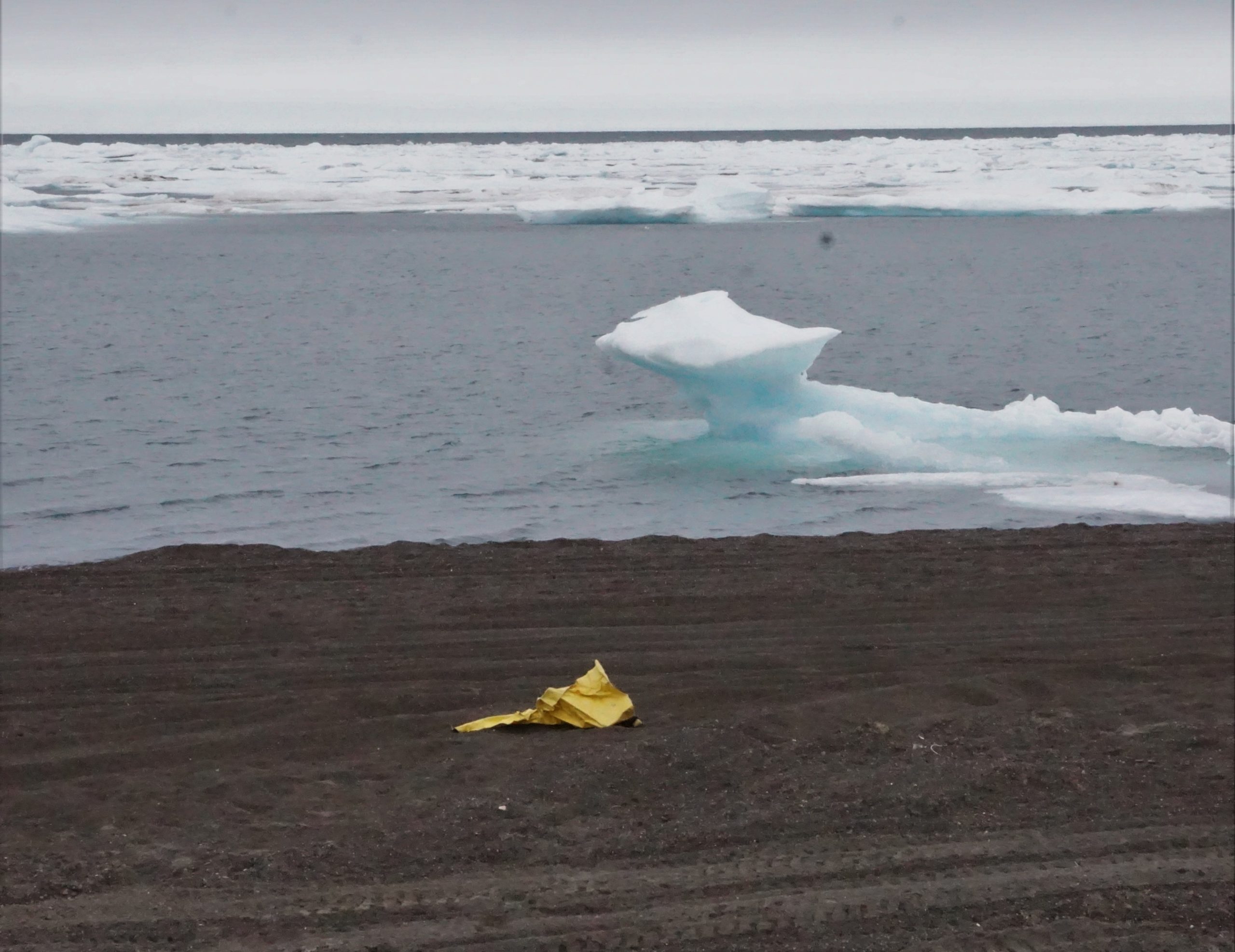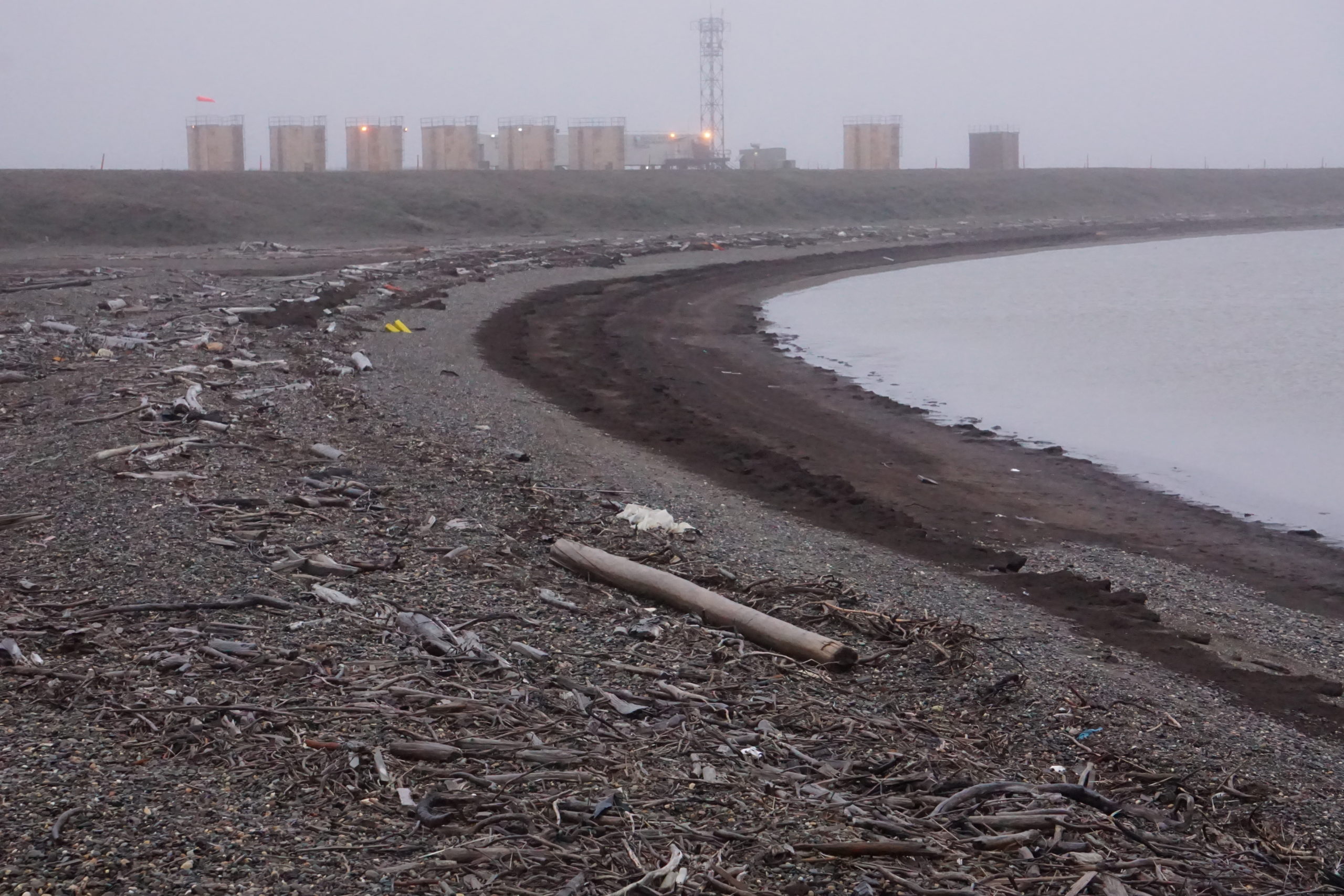A rising tide of plastic pollution in the Arctic is spurring international action
Under Iceland's chairmanship, the Arctic Council has six different projects underway related to marine plastics.

People in the Arctic increasingly face a conundrum: Why are their waters and marine systems — so far away from the world’s major population industrial centers — becoming laden with plastics?
Microplastics have been found embedded in Arctic sea ice, littering the Arctic Ocean floor and in soils of Arctic beaches.
Remoteness does not seem to translate to protection, as a 2015 study of U.S. national park units found. Two Arctic Alaska sites, Bering Land Bridge National Preserve and Cape Krusenstern National Monument, have concentrations of plastics in their beach sands nearly approaching those in more urban areas like San Francisco’s Golden Gate National Recreation Area, according to the study.
To try to find some answers — and possibly some solutions — the eight-nation Arctic Council has launched a series of programs.
[A new Arctic Council project aims to trace how plastics travel in the Arctic]
Iceland’s current two-year chairmanship program features a focus on marine debris, including the tiny bits of plastics that are working their way into the food web.
It is a logical issue for Iceland, a small country surrounded by water and in the middle of debris- and plastic-transporting currents, said Joel Plouffe, an adviser to the Arctic Council Secretariat.

Under the Icelandic chairmanship, six different projects spanning five of the council’s six working groups are underway, Plouffe said in a presentation at the Alaska Forum on the Environment, held last week in Anchorage.
One project is aimed at aimed at finding practical solutions for solid-waste management, he said. Another project is seeking out best practices for waste management in small Arctic communities, the subject of an Arctic Council workshop held last week in Anchorage, he said.
A different project, under the auspices of the Arctic Council’s Conservation of Arctic Flora and Fauna working group, is seeking a better understanding of the impacts of plastics on birds. Those birds go in and out of the Arctic region, migrating south in winter along various corridors, making Arctic plastics a concern for nations in the state, he said. “This touches all the Arctic states and the non-Arctic-states,” he said.
Another project is monitoring sources and movements of plastics into the region, and AMAP, which is overseeing it, has created an expert working group on the subject, Plouffe said.
The ultimate outcome of those projects will be a regional action plan for marine litter and plastics, Plouffe said. “This would be a voluntary framework that would guide all actions for all of the arctic states in the region to combat plastics and marine litter,” he said.
Much of the work to date will be discussed at an upcoming international symposium on Arctic and subarctic marine plastics. The symposium is hosted by the government of Iceland and will be held in Reykjavik.
The dangers of marine debris are well known. Animals that eat plastic often die of starvation, their bodies too packed with trash to take in nourishment. In one widely reported case last year, a whale that died in the Philippines was found to have 88 pounds of plastic bags in its stomach.
Bags are commonly ingested, said Doug Causey of the University of Alaska Anchorage.
“The clear plastic bags, when they go into the water, can look like jellyfish, and that is what animals eat,” said Causey, who manages a program at UAA that studies climate change and pollution in Alaska and the Arctic.
But possibly more dangerous, he said, are the smaller bits of plastic. Birds and fish eat them because those plastic bits appear to be food, so those small amounts of plastic work their way up the food web, he said.
During field work last summer off isolated St. Matthew Island in the Bering Sea, Causey said he and his team found microplastics in all 120 birds they sampled, members of 10 different species.
Because plastics are coated with various chemicals, the breakdown into tiny pieces frees up a variety of substances that accumulate in animals’ bodies, Causey said. Among them are phthalates, chemical compounds that can make plastic more pliable. They are known to be estrogen disruptors.
Research by Veronica Padula, a graduate student who works with Causey, has documented phthalates in bird eggs from St. Paul Island in the Bering Sea.
Other research has provided evidence about how plastics and the chemicals they carry get into the North.
Causey said some of his students have found microscopic bits of plastic in on glaciers in Alaska, indicating that atmospheric currents add to ocean currents as transporters of the pollutants
A recent study led by the Alfred Wegener Institute found microplastics in snow from ice floes in the Fram Strait.
The concentrations in those Arctic samples were lower than those found in snow from the Swiss Alps and from Germany’s Bavaria region, but “still substantial,” said the study, published in August in the journal Scientific Advances. The findings back up the idea that microplastics, abbreviated as MP, are carried north on air currents.
“Our results highlight a hitherto neglected pathway of MPs to the Arctic Ocean, an ecosystem that is already stressed by the effects of the climate crisis,” the study said.